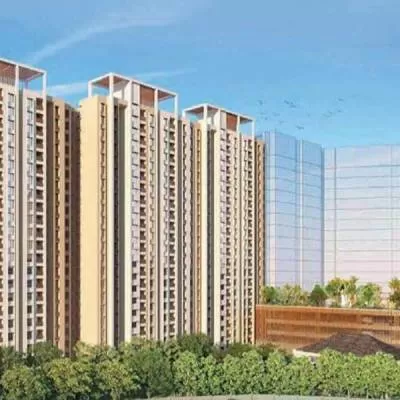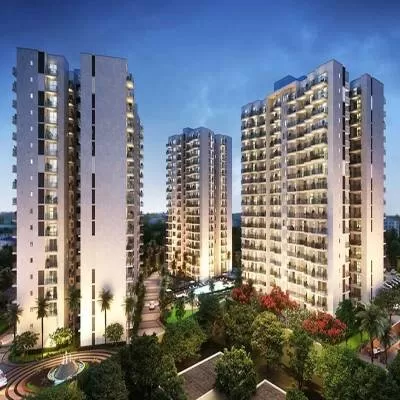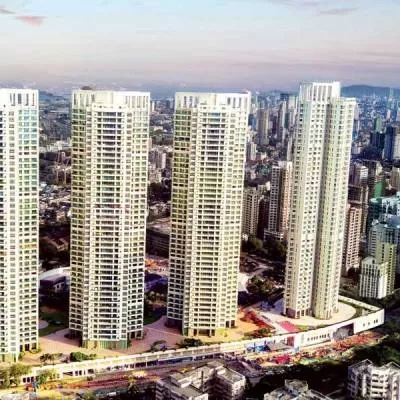- Home
- Real Estate
- Building Trust in the Changing Market Place

Building Trust in the Changing Market Place
All this assumes more significance since India is a disaster-prone country, with 85 per cent of Indian land vulnerable to one or more natural hazards. Unprecedented rate of urban growth, increasing dependence on complex technical systems, combined with climate change predictions, have increased the disaster uncertainty even more.
The gravity of the whole scenario can very well be gauged from the fact that when global real estate consultant CBRE recently conducted a survey, it found that a majority of our corporates (having their offices in commercial buildings), are not prepared for disaster management. According to the study, which includes over 100 top corporates across the country and over 350 respondents, 75 per cent of the Indian firms are not ready for disaster. It says that 96 per cent of the defendants agreed that majority of damages from disaster befall as a direct result of destruction to the built environment, lack of prudence and planning. Nearly, 97 per cent concurred that an integrated and comprehensive approach is necessary to improve the safety of buildings from disasters.
Last year, the rains and flooding created real havoc in Chennai and completely exposed our unpreparedness for any such natural calamities. This not only exposed the plans and capabilities of our civic systems, but also showed how ill-conceived and unplanned our offices and commercial building are when faced with any such eventualities. In fact, rains and floods badly impacted the operations of major IT and automobile firms, including Cognizant, Infosys, TCS, Hyundai, Ford and Renault and thus inflicted heavy losses to these firms.
In Chennai, where the IT industry is one of the largest and prime employers, had to completely alter their business continuity plan, something which they simply cannot compromise with. Almost every company serves and assists clients in the US and other parts of the world, and hence work to a different time zone. They cannot afford disruption in work. But, following the rains in December 2015, most of them had to shut down for at least a few days. These episodes only scratch the surface of the damage an unscheduled outage occurrence can cause to the industry. Many of these companies have to investment heavily on their Disaster Recovery and Business Continuity models, wherein the companies had to tweak their disaster management plan in favour of multi-site project staffing and assignment to enable quick disaster recovery when needed.
Keeping all this in mind (both business losses and manpower), an integrated and comprehensive approach is necessary to improve the safety of buildings from disasters. In India, the last decade or so has seen a concerted effort by multiple stakeholders to build green buildings and seismic-resistant buildings. It is high-time that the definition of a sustainable building be changed to include disaster planning, management, recovery and resiliency in their sustainability efforts. We have already seen how MNCs and major corporate (even mid-size companies) lately have become very conscious about these aspects while selecting their commercial and office space requirements. They are ready to pay premium for those buildings that include these aspects and provide them assurance of not only business continuity but safety of employees.
In fact, developers should view this as a major opportunity and gear up to cater to this segment of the business more aggressively. We have already seen how the green concept is sweeping across the real estate sector, with more and more developers are seeing this as a marketing tool in a market where buyers are much more educated and discerning. It has already become a big differentiating factor for the building industry.
It is high-time that already existing and meticulously defined building codes as per our National Building Code by the Bureau of Indian Standards are implemented. We have quite a comprehensive set of codes, however, there is lot left to be desired when it comes to implementation of these codes.
Regulations require urban local bodies to check conformity of structures with the approved drawings while granting completion and occupancy certificates. The National Building Code 2005 states that non-compliance with the sanctioned drawings should invite suspension of further construction till the required changes are put in place, and demolition of illegal portions. Urban local bodies often claim that inspections usually cannot be carried out because they are severely short of man power.
It is high-time that the entire system be revamped. The Bureau of Indian Standards released a document some time back saying it would be revising the National Building Code and come up with a specialised building code for high-rise buildings in the year 2015. Till date, the revised National Building Code and the Specialised Building Code, essential for constructing safe buildings with respect to earthquakes, are yet to be released.
More and more developers must aggressively include various elements of disaster management in their plans and designs and use this as their marketing instrument. In fact, adequately made disaster-compliant structures will also add significantly to their credibility and track record, which can be leveraged well in the changing market condition.
About the Author:
Ashok Mohanani is the Chairman and Managing Director of Ekta World.
The recent cyclone and rains in Chennai has certainly brought to the fore the imperatives of constructing buildings that can effectively withstand the furry of natural disasters. Despite being an integral part of our building code, the implementation of disaster-related components has often been compromised by the industry due to multiple reasons. Even activism and awareness level about disaster compliance, both in case of developers and consumers has been quite low, and hence, no concerted efforts have been made to look into the entire situation holistically. All this assumes more significance since India is a disaster-prone country, with 85 per cent of Indian land vulnerable to one or more natural hazards. Unprecedented rate of urban growth, increasing dependence on complex technical systems, combined with climate change predictions, have increased the disaster uncertainty even more. The gravity of the whole scenario can very well be gauged from the fact that when global real estate consultant CBRE recently conducted a survey, it found that a majority of our corporates (having their offices in commercial buildings), are not prepared for disaster management. According to the study, which includes over 100 top corporates across the country and over 350 respondents, 75 per cent of the Indian firms are not ready for disaster. It says that 96 per cent of the defendants agreed that majority of damages from disaster befall as a direct result of destruction to the built environment, lack of prudence and planning. Nearly, 97 per cent concurred that an integrated and comprehensive approach is necessary to improve the safety of buildings from disasters. Last year, the rains and flooding created real havoc in Chennai and completely exposed our unpreparedness for any such natural calamities. This not only exposed the plans and capabilities of our civic systems, but also showed how ill-conceived and unplanned our offices and commercial building are when faced with any such eventualities. In fact, rains and floods badly impacted the operations of major IT and automobile firms, including Cognizant, Infosys, TCS, Hyundai, Ford and Renault and thus inflicted heavy losses to these firms. In Chennai, where the IT industry is one of the largest and prime employers, had to completely alter their business continuity plan, something which they simply cannot compromise with. Almost every company serves and assists clients in the US and other parts of the world, and hence work to a different time zone. They cannot afford disruption in work. But, following the rains in December 2015, most of them had to shut down for at least a few days. These episodes only scratch the surface of the damage an unscheduled outage occurrence can cause to the industry. Many of these companies have to investment heavily on their Disaster Recovery and Business Continuity models, wherein the companies had to tweak their disaster management plan in favour of multi-site project staffing and assignment to enable quick disaster recovery when needed. Keeping all this in mind (both business losses and manpower), an integrated and comprehensive approach is necessary to improve the safety of buildings from disasters. In India, the last decade or so has seen a concerted effort by multiple stakeholders to build green buildings and seismic-resistant buildings. It is high-time that the definition of a sustainable building be changed to include disaster planning, management, recovery and resiliency in their sustainability efforts. We have already seen how MNCs and major corporate (even mid-size companies) lately have become very conscious about these aspects while selecting their commercial and office space requirements. They are ready to pay premium for those buildings that include these aspects and provide them assurance of not only business continuity but safety of employees. In fact, developers should view this as a major opportunity and gear up to cater to this segment of the business more aggressively. We have already seen how the green concept is sweeping across the real estate sector, with more and more developers are seeing this as a marketing tool in a market where buyers are much more educated and discerning. It has already become a big differentiating factor for the building industry. It is high-time that already existing and meticulously defined building codes as per our National Building Code by the Bureau of Indian Standards are implemented. We have quite a comprehensive set of codes, however, there is lot left to be desired when it comes to implementation of these codes. Regulations require urban local bodies to check conformity of structures with the approved drawings while granting completion and occupancy certificates. The National Building Code 2005 states that non-compliance with the sanctioned drawings should invite suspension of further construction till the required changes are put in place, and demolition of illegal portions. Urban local bodies often claim that inspections usually cannot be carried out because they are severely short of man power. It is high-time that the entire system be revamped. The Bureau of Indian Standards released a document some time back saying it would be revising the National Building Code and come up with a specialised building code for high-rise buildings in the year 2015. Till date, the revised National Building Code and the Specialised Building Code, essential for constructing safe buildings with respect to earthquakes, are yet to be released. More and more developers must aggressively include various elements of disaster management in their plans and designs and use this as their marketing instrument. In fact, adequately made disaster-compliant structures will also add significantly to their credibility and track record, which can be leveraged well in the changing market condition. About the Author: Ashok Mohanani is the Chairman and Managing Director of Ekta World.




















